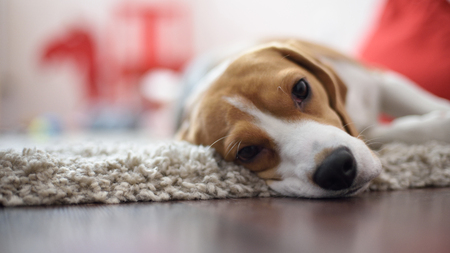Understanding a Cat’s Natural Diet
What Do Wild Cats Eat?
When we look at your cat’s wild cousins—like lions, tigers, and even the little wildcats found across America—their diets are all about meat. Wild cats are obligate carnivores, which means their bodies are built to eat mostly animal protein. In nature, they hunt birds, rodents, rabbits, and sometimes insects. These prey animals provide not just muscle meat but also organs and bones, giving wild cats a diet packed with protein and essential nutrients.
Comparison: Cat vs Dog vs Human Diets
| Cats (Wild & Domestic) | Dogs | Humans | |
|---|---|---|---|
| Main Diet Type | Carnivore (meat-based) | Omnivore (mixed) | Omnivore (mixed) |
| Protein Needs | Very High | Moderate | Varies (lower than cats) |
| Can Digest Plants? | Poorly | Well | Very Well |
| Essential Nutrients from Meat Only? | Yes (taurine, arachidonic acid) | No | No |
Why Is Protein So Important for Cats?
Cats need more protein in their diet than dogs or people because of how their bodies work. Their metabolism is set up to use protein as their main energy source. For example, cats must get certain amino acids like taurine directly from animal proteins because they can’t make enough of it themselves. Without enough high-quality protein, cats can develop serious health problems like heart issues or poor vision.
A Real-Life Example
If you’ve ever watched your cat chase a toy mouse or pounce on a bug in your living room, you’re seeing natural hunting instincts in action. Even though they might sleep on your couch most of the day, their bodies still crave the nutrients found in real prey—especially protein.
2. What Counts as a High-Protein Diet for Cats?
Defining “High-Protein” for Your Cat
When people talk about high-protein diets for cats, they usually mean foods that have more protein than the average commercial cat food. But what does “high-protein” really mean? For most adult cats, a standard diet contains around 26% to 30% protein on a dry matter basis. A high-protein cat food generally contains at least 35% protein—sometimes much more. This is important because cats are obligate carnivores, which means their bodies are designed to get most of their nutrition from animal proteins.
Why Protein Matters for Cats
Cats need protein for muscle health, energy, and to support vital organs. If your cat is active or still growing, they may need even more protein than average. But it’s not just about quantity; quality matters too. Animal-based proteins (like chicken, turkey, fish, or beef) provide all the essential amino acids cats need.
How to Spot High-Protein Cat Food: Reading Pet Food Labels
The easiest way to know if your cat’s food is high in protein is to check the pet food label. Here’s how you do it:
- Look for the “Crude Protein” percentage: This is listed under the Guaranteed Analysis section on every bag or can of cat food.
- Check the ingredients: The first ingredient should be an animal protein source like chicken, salmon, or beef.
- Know wet vs. dry food: Wet food will show a lower percentage of protein because it has more water. Compare foods using the “dry matter basis” for accuracy.
Quick Guide: Comparing Protein Levels in Cat Food
| Type of Cat Food | Standard Protein (%) (Dry Matter Basis) |
High-Protein (%) (Dry Matter Basis) |
|---|---|---|
| Dry Kibble | 26 – 30% | 35% or more |
| Wet Canned Food | 8 – 12% | 12% or more |
Example: How to Read a Cat Food Label in the U.S.
If you pick up a popular brand at your local PetSmart or Target and see “Crude Protein (min) 40%,” you’re looking at a high-protein formula. If chicken meal or turkey is the first ingredient, that’s another good sign. Avoid foods where corn, soy, or by-products are listed first—they offer less usable protein for your cat.
A Practical Tip: Ask Your Vet!
Your veterinarian can help you decide exactly how much protein your cat needs based on age, weight, and activity level. They can also suggest trusted brands available in the U.S., so you don’t have to guess when browsing the pet aisle.
![]()
3. Potential Health Benefits of High-Protein Diets
Real-Life Improvements You Can See in Your Cat
Switching your cat to a high-protein diet can bring about some noticeable changes that make daily life better for both you and your feline friend. Here’s what many American cat owners have seen when their cats get the right amount of protein:
Better Muscle Tone and Strength
Cats are natural hunters, so they need strong muscles to stay active and healthy. With more protein in their food, many owners notice that their cats feel firmer and more toned when picked up or petted. This is especially important for kittens, active breeds, or older cats who may start to lose muscle as they age.
Shinier, Softer Coats
A dull or rough coat can be a sign your cat isn’t getting enough nutrition. After switching to a high-protein diet, it’s common to see a shinier, softer fur within weeks. Protein helps create the building blocks for healthy skin and fur, leading to less shedding and fewer hairballs.
Increased Energy and Playfulness
If your cat seems lazy or sleeps all day, lack of protein might be part of the problem. Many owners report that their cats become more energetic and playful after changing their diet. You may find your cat chasing toys, running around the house, or being more curious about their surroundings.
Weight Management Made Easier
Obesity is a big concern for indoor cats in America. High-protein diets help cats feel full longer, which can stop them from overeating. This makes it easier to keep your cat at a healthy weight without always having to cut back on portions.
Common Health Benefits at a Glance
| Health Benefit | What Cat Owners Might Notice |
|---|---|
| Improved Muscle Tone | Cat feels stronger and more athletic; less “flabby” when picked up |
| Healthier Coat | Softer, shinier fur; fewer tangles; less shedding |
| More Energy | Increased playfulness; more curiosity; less lethargy |
| Easier Weight Control | Cat stays satisfied between meals; gradual weight loss if overweight |
Tip for Cat Parents:
If you’re thinking about trying a high-protein diet for your cat, pay attention to these changes over the first few months. Keep an eye on their body shape, activity level, and coat condition to see how they respond.
4. Risks and Considerations of Too Much Protein
If you’re thinking about switching your cat to a high-protein diet, it’s important to understand that more protein isn’t always better. While cats are natural carnivores and need protein, there are situations where too much can cause problems—especially for older cats or those with certain health issues.
When High-Protein Diets Can Be a Problem
Cats with healthy kidneys usually handle extra protein just fine. But if your cat is a senior (usually age 10 and up) or has kidney disease, a high-protein diet can put extra stress on their body. As cats age, their organs—including their kidneys—can become less efficient at processing waste from protein breakdown. This means excess protein can actually speed up kidney damage in some cases.
Examples of Cats Who May Need Less Protein
| Cat Type | Why Less Protein? | Example Scenario |
|---|---|---|
| Senior Cat | Aging kidneys may not filter waste as well | Your 13-year-old cat starts drinking more water and urinating frequently after switching to high-protein food |
| Cat with Kidney Disease | Extra protein increases kidney workload | Your vet diagnoses early-stage kidney disease and suggests a special diet with moderate protein levels |
| Inactive or Overweight Cat | Too much protein can turn into extra calories and weight gain | Your indoor-only cat gains weight quickly on a high-protein diet without extra exercise |
What to Watch For
If your cat is on a high-protein diet, keep an eye out for signs like increased thirst, frequent urination, or loss of appetite. These could signal that your cat’s kidneys are having trouble keeping up. Always check with your veterinarian before making major changes to your cat’s food, especially if they’re older or have been diagnosed with any health conditions.
5. American Cat Food Options: Navigating the Pet Store
If you’re looking to boost your cat’s health with a high-protein diet, picking the right food at your local U.S. pet store can be overwhelming. Here’s how you can confidently shop for high-protein cat foods and make smart choices that fit your feline’s needs.
What to Look for on Labels
High-protein cat foods in the United States usually list their protein content right on the front or back of the bag or can. Look for these key words and numbers:
| Label Term | What It Means |
|---|---|
| “High Protein” | Typically means 35% or more protein (dry matter basis) |
| “Grain-Free” | No grains; often higher in animal protein sources |
| “Real Chicken/Salmon/Turkey as #1 Ingredient” | Meat is the primary protein source, not fillers |
| “Complete & Balanced” | Meets AAFCO nutrition standards for cats |
Popular High-Protein Brands in the U.S.
Here are some well-known brands you’ll find at most American pet stores that offer high-protein options:
- Blue Buffalo Wilderness: Known for grain-free, meat-first recipes.
- Wellness CORE: Focuses on high-protein, natural ingredients.
- Merrick Purrfect Bistro: Offers high animal protein and no artificial additives.
- Nulo Freestyle: Features low carbs and high meat content.
- Taste of the Wild: Uses roasted meats and is free from common fillers.
- Instinct by Nature’s Variety: Emphasizes raw-inspired, high-protein formulas.
Tips for Shopping Smart in U.S. Stores
- Read the ingredients list first: The first two or three ingredients should be whole meats like chicken, turkey, or salmon—not “by-product meal.”
- Avoid excessive fillers: Skip foods with corn, wheat, soy, or artificial colors/flavors near the top of the list.
- Check guaranteed analysis: On dry food bags, look for at least 35% protein. For canned food, check for at least 8-10% (it’s higher when moisture is removed).
- Aim for variety: Mix wet and dry high-protein foods to keep your cat interested and hydrated.
- Ask store associates: Don’t hesitate to ask staff about their best-selling or vet-recommended high-protein brands—they know what local cat parents are buying!
Quick Reference Table: What to Check Before Buying
| Feature | What To Do |
|---|---|
| Main Protein Source Listed First? | Select products where real meat is #1 ingredient. |
| No By-Products? | Avoid if “by-product meal” is among first ingredients. |
| No Artificial Additives? | Look for “no artificial preservatives/colors.” |
| AFFCO Statement Present? | This assures nutritional completeness. |
| Suits Your Cat’s Age? | Puppy/kitten, adult, or senior formulas available. |
Your Next Trip to the Pet Store
The next time you’re strolling down the pet food aisle at Target, Petco, Walmart, or your neighborhood pet boutique, grab a few bags or cans and use this guide as a checklist. Taking a few extra minutes to compare labels means you’re setting your cat up for better energy, a shinier coat, and lifelong health—one bowl at a time!
6. When to Consult Your Veterinarian
If you’re thinking about switching your cat to a high-protein diet, or you’ve already started and notice something unusual, knowing when to reach out to your vet is essential. Not every cat responds the same way, and some may need extra care or adjustments along the way.
Key Situations to Call Your Vet
| Situation | Why It Matters | Example |
|---|---|---|
| Behavioral Changes | Sudden changes could signal that your cat isn’t adjusting well to the new diet. | Your usually playful kitty becomes withdrawn or irritable after starting a high-protein food. |
| Pre-existing Health Conditions | Certain conditions, like kidney disease, can be made worse by too much protein. | Your senior cat with a history of kidney issues may need a specially balanced protein intake. |
| Poor Appetite or Vomiting | Lack of interest in food or frequent vomiting may mean the new diet doesn’t agree with your cat’s digestive system. | Your cat starts leaving food untouched and throws up more than once after meals. |
| Unusual Weight Loss or Gain | Dramatic weight shifts could point to an underlying problem with the diet change. | You notice your cat dropping pounds quickly or gaining excess weight within a few weeks. |
| Lethargy or Weakness | Low energy can be a sign of nutritional imbalance or other health issues related to diet changes. | Your active cat now sleeps all day and seems uninterested in playing. |
Don’t Wait for Emergencies
If you’re unsure whether your cat’s reaction is normal, it’s always better to play it safe and call your vet. Even small changes can be important clues that something isn’t right. Vets are used to questions about nutrition and can help you create a plan that keeps your cat healthy and happy on a high-protein diet.


